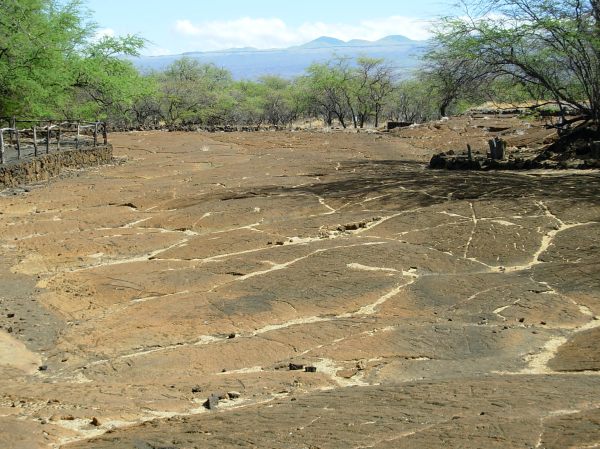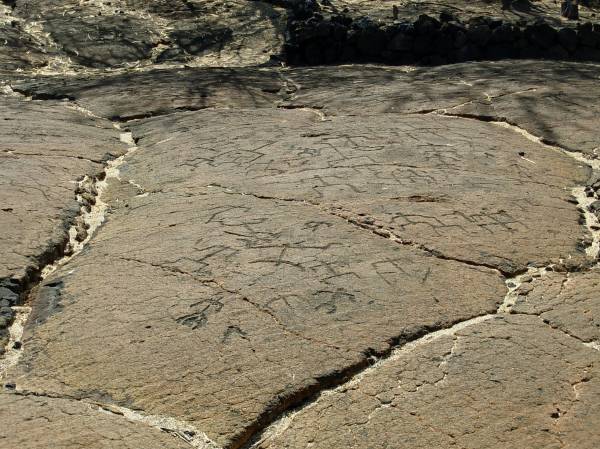I have never been a fan of the Big Island or its ancient culture but when I was offered a free trip there with my wife Diana to attend a medical conference, well, who was I to say no. In fact, I think “just say no” is a pretty dumb idea in any context, but let’s not get away from our current subject.
At the time of First Contact James Cook found in Hawaii a strange society, a version of Lost Horizon mixed with Lord of the Flies. Kapu ruled every aspect of life, and the outer world had been mostly forgotten along with the navigation techniques required to keep in touch with the other Polynesian cultures. Human sacrifice was a popular religious festivity.
None of these facts excuse the immediate brutalization and degradation of the indigenous population by Europeans. Virtually every trace of the old ways was stamped out, as it was in so many other parts of the Pacific.
Still, a few tantalizing remains haunt our collective imagination.
1) pre-contact fish pond on the grounds of the Mauna Lani Resort – one marvels that it wasn’t filled in and stacked with condos
Best of all is the petroglyph field at Puako. Few people visit the place and access is accomplished through dense scrub and thorny trees along a poorly maintained trail. And the ambient temperature in the forest, without the cooling effects of the coastal trade winds, can be fierce.
There are two options for access. You may drive to a parking lot – a favorite spot for locals to gather in their pick-ups and drink beer – and walk into the forest. Or you may simply plod along the beach, a beautiful stroll. The coastline here is wild and untrammeled, a true marvel. Eventually you’ll reach that same parking area.
2) The shore near the petroglyph site
If you see locals in the parking lot they may or not exhibit friendliness. Frankly I understand their reluctance to embrace outsiders but many among them have cold hearts.
Regardless, it’s a simple matter to duck your head and walk the trail. I wondered where exactly I was headed when I began as I didn’t have a map and accurate directions were impossible to acquire.
3) The trail
I began to feel that I was on the right track after about half a kilometer and I came to this place.
4) Interesting formations of trees and volcanic rock
The first petroglyphs lie on the trailside.
5) Intriguing geometric figure in the rock resembling petroglyphs depicting snakes found in Peru. No snakes are native to the Hawaiian islands, as far as I know, and the similarity is likely coincidental. Or perhaps that of the carver’s ancient memory
Suddenly the forest cleared and I was confronted with a vast field of ancient lava that formed the canvas for the petroglyphs. Exactly what they mean and when they were carved is open to debate.
6) The petroglyph field – supposedly the biggest such site in the Pacific
A rickety fence surrounds the old lava flow and rightly discourages visitors from trampling the glyphs. But since Puako is unguarded it’s hard to imagine that people don’t come here, take rubbings and generally disrespect the history.
7) The glyphs variously depict men, hunting, and any number of other subjects, none of which I am qualified to interpret
8) Canoes or counting? Or something else entirely
Specialists think it likely that the glyphs were carved over a period of time, and not all together in one session. But if anyone still understands the details, they’re not talking. Not that I would, either, given what the Europeans did to their ancestors.
Puako is one of a very few places on the Big Island where I was able to drift into the past, unmolested by modernity. I’d go there again in a heartbeat if given the chance. But Hawaiians never extend their welcome for very long.
9) Kealakekua Bay, where the Hawaiians offed Captain James Cook, having tired of his travel style









